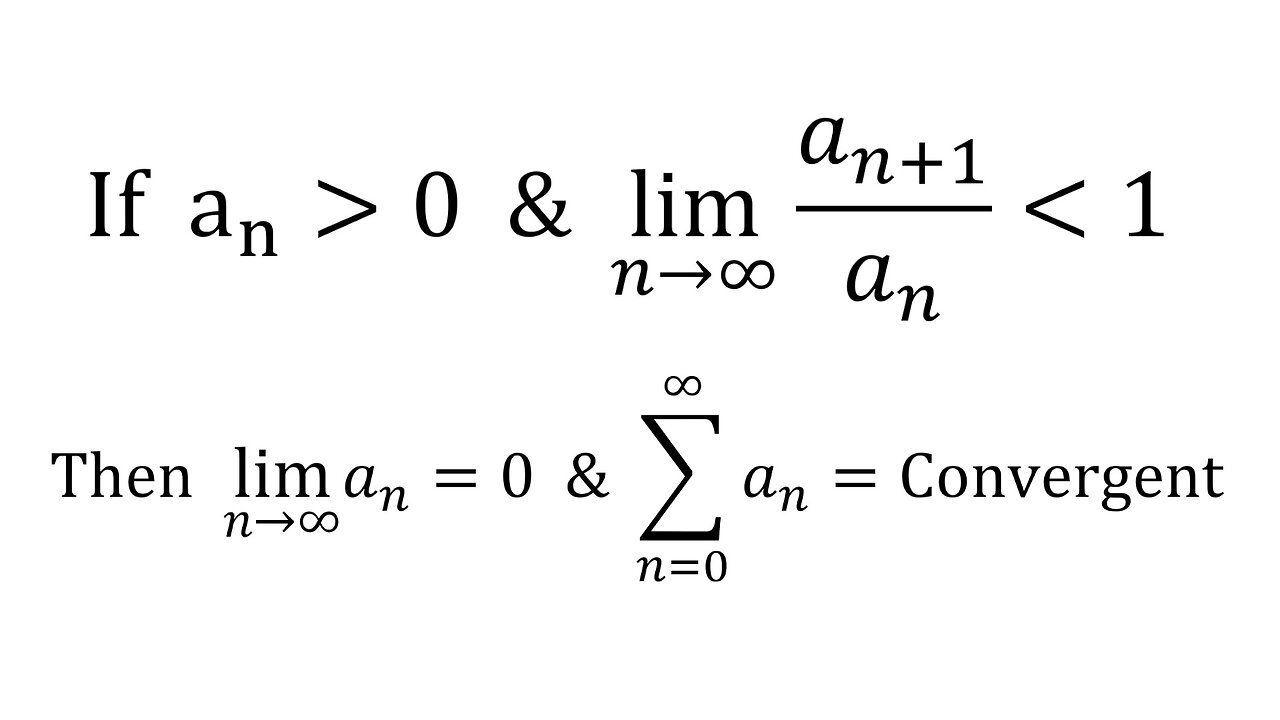Up next
test lev
Chemical Guys Diablo Wheel Gel Cleaner Test and Review | September 2021
Cardi B Reacts To Celina Powell Revealing Paternity Test Proving Offset Is The Father
Full Throttle Test: Did we Push a Pulse Jet Engine to its Limits?!
the power of critical thinking: shifting perspectives in troubled times jerogan #joerogan #viral
True-False Quiz Question 7: When the Ratio Test is Inconclusive
True-False Quiz Question 18: Convergence by the Ratio Test
Rationing Begins In UK, US Faces Major Power Outages As Energy Crisis Worsens
Is Moderna's Flu/Covid Combo Vaccine Safe? Here's What They Didn't Test in Phase 3 Trials!
Putin Vows To Shut Down Hollywood Adrenochrome Supply Chain
Supreme Court Rules Trump Is A King/Karen Top 5/Bannon Goes To Jail/Tractor Supply Sells Out/More!
Ep. 3389a - All Climate Predictions Have Not Come True, Banks Pass [CB] Fake Stress Test
SCOTUS Strikes Down CHEVRON, WEAKENING Federal Agencies Power
Lewitt LCT 1040 Review / Test (vs. LCT840, 940, U87, U67)
The Dangers Of Allowing The Democrat Elite To Remain in Power
Celsius energy drink doesn't cause positive drug test
Crisis committee seeks solutions to power cuts
Daily Wire Backstage: The Presidential Debate
Biden REFUSES Drug Test Ahead of The Debate, Here’s The Likely Reason Why | Elijah Schaffer
DEMOCRATS PANIC AS TRUMP DEMANDS BIDEN TAKE A DRUG TEST
"N Word" Girl CALLS OUT Daily Wire and Brett Cooper!
How Do We Love in the Power of Another? Galatians 5:16–18, Part 3
Curtiss Aircraft test pilot Lloyd Child attempts power dive in Hawk airplane 1939!
"You’re going to suffer if Keir is in power" Rishi blasts on our Election Showdown @SunElection
Manchester Airport power cut causes flight cancellations and delays
Huge queues at Manchester Airport as power cut leaves thousands facing cancellations
John Deere tractor test track action — 1950s promo film !
California and New Mexico plasma fires +don't underestimate the power of the dark fiber
"Power of Thoughts'' - Pastor Paula White-Cain
Infallible A.I. Consciousness Test
Environment, Power, and Politics 2008
The No Jumper Crew Listening to Your Music
THE U.S. AIR FORCE IN VIETNAM 1966 "AIR POWER IN ACTION" 71232
BARBED WIRE at the BORDER !?!?!
2023 Microphone Test (sponsored by the Kunt Brigade)
100 years of radio in Africa: from propaganda to people’s power
Jon Zherka Defends SNEAKO on No Jumper With Adam22
Senate Democrats Push For Gun Control About Power, Not Public Safety
Powerful solar storm will produce northern lights, could disrupt power in Colorado
N. Korea makes fresh threats, US bombers fly after ICBM test
Cambodian PM Hun Sen to hand over power to son
What If a Simple Blood Test Could Detect Cancer? | Hani Goodarzi | TED
How to Test a PC Power Supply | Jumper Wire, PSU Tester, and Multimeter
How to Test a PC Power Supply | Jumper Wire, PSU Tester, and Multimeter CompTIA A+ Hardware - 220-1101 Exam Prep #powersupply #howto #comptia In this video, I demonstrate how to test your computer power supply. I review three different options that you can use to test your PSU and explain each in detail. Timestamps Intro 00:00 Symptoms 00:53 Three Options 01:20 Jumper Bridge 02:02 Jumper Wire 02:42 PSU Tester 03:30 Multimeter 05:24 Conclusion 08:03 Power Supply Cables Explained - https://youtu.be/ncJAlasqr08 Power Supply Tester - https://tinyurl.com/3r6m3tk8 ****Additional Info**** Standard Advanced Technology eXtended (ATX) power supplies provide + 3.3 volts, +/- 5 volts, and +/- 12 volts of DC power. Most modern components require +12 volt output. Each voltage output circuit is referred to as a rail and can power multiple devices. Some computer manufacturers, such as Dell or HP, produce proprietary power supplies. These power supplies might have a unique shape or use different wiring schematics on connectors. ***Most power supplies for custom builds will have all black wires for each rail. However, if you have an older or proprietary power supply, it might have yellow, red or orange wires. These colors represent specific voltages: Yellow - 12V Red - 5V Orange - 3.3V Some power supplies have a voltage switch that toggles between two voltage settings. Depending on the country, typically you can toggle the voltage switch either between 115 and 230 volts, or between 110 and 220 volts. 115 volts is used in North America. 230 volts is used in Europe. 100 volts is used in Japan. 220 volts is used in most parts of Asia. If you test the power supply using a multimeter or power supply tester, voltage levels should be within +/- 5% of normal. If they aren't, the power supply is bad or failing and you should replace it. 12 V rail should be between 11.4 and 12.6 volts. 5 V rail should be between 4.7 and 5.25 volts. 3.3 V rail should be between 3.1 and 3.4 volts. ****IMPORTANT**** Take proper safety precautions. Power supplies carry dangerous levels of electrical current. You should: Never ground yourself when working on a power supply. Never open or disassemble a power supply. Always replace the entire unit. Please LIKE if this video helped you! I appreciate it.
- Top Comments
- Latest comments
















![Ep. 3389a - All Climate Predictions Have Not Come True, Banks Pass [CB] Fake Stress Test](https://hugh.cdn.rumble.cloud/s/s8/1/H/G/2/B/HG2Bs.qR4e-small-Ep.-3389a-All-Climate-Predi.jpg)
































